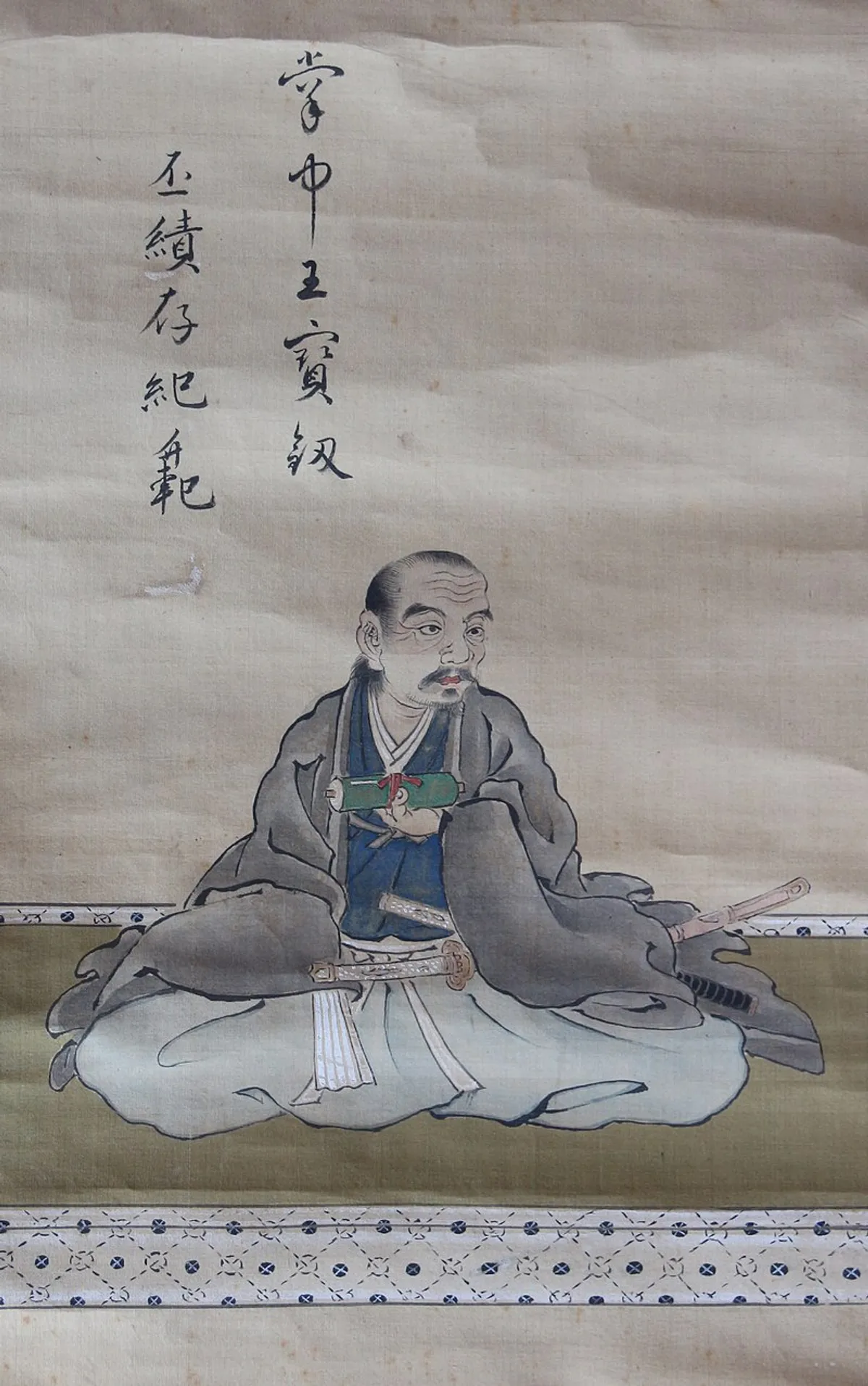
Origin
- Published May 9, 2025
Hyōhō Taisha-ryū: Origins and Classical Lineage
Founding Period: Late Sengoku Era (mid-16th century)
Founder: Marume Kurando no Suke Nagayoshi (丸目蔵人佐長恵, 1540–1629)
Location: Hitoyoshi, Higo Province (present-day Kumamoto Prefecture)
Marume Nagayoshi was born into a retainer family serving the Sagara clan in Higo. In his youth, he traveled to Kyoto in search of martial instruction and challenged the renowned Kamiizumi Ise-no-Kami Nobutsuna, founder of Shinkage-ryū. Defeated but impressed, Marume became Kamiizumi’s disciple and studied under him for approximately seven years.
In 1567, Marume was awarded a menkyo kaiden (license of full transmission) in Shinkage-ryū. He returned to Hitoyoshi, where he served as the Sagara clan’s official sword instructor. Marume synthesized the teachings of Shinkage-ryū with his own battlefield experience and independent spiritual study to form a new style: Shinkage Taisha-ryū, later shortened to Taisha-ryū.
Key Technical Features:
- Emphasis on deep stances and powerful, committed cuts (notably kesagiri)
- Techniques optimized for armored combat and irregular terrain
- Use of esoteric principles influenced by Buddhist, Daoist, and Indian cosmology
Context: During the late Sengoku period, Japan was fragmented among warring domains. The Sagara of Hitoyoshi were surrounded by powerful neighbors, including the Shimazu of Satsuma. Marume’s techniques were field-tested in real military campaigns.
In 1579, Marume led a defensive action at Ōkuchi Castle but was defeated by Shimazu Iehisa. Following this loss, he was placed under house arrest by the Sagara. Afterward, he withdrew from active military service and devoted his life to refining and teaching Taisha-ryū.
Classical Transmission and Lineage (Edo Period)
After the death of Kamiizumi Nobutsuna and the formal establishment of Taisha-ryū, Marume passed the tradition to a carefully selected line of successors, ensuring the preservation of its teachings.
Lineage of Sōke (Headmasters)
-
1st Sōke – Marume Kurando no Suke Nagayoshi (1540–1629)
Founder and original systematizer of Taisha-ryū. -
2nd Sōke – Konose Gunsuke Ōkami Tadayuki
A senior retainer of the Sagara, directly appointed by Marume upon his retirement. -
3rd Sōke – Sagara Shōjirō Yoritake
A member of the ruling clan’s inner circle, responsible for institutionalizing the art within the Hitoyoshi domain. -
4th Sōke – Sagara Sahei Nagafusa
A successor who maintained the school’s technical curriculum during the transition into a more peaceful period. -
5th Sōke – Konose Goemon Nyūdō Isai Ōkami Tadanobu
Oversaw the continuation of the school as a core martial discipline among the Sagara retainers. -
6th Sōke – Oda Shichirōemon Fujiwara Sadanori
His succession marked the beginning of the hereditary Oda lineage of Taisha-ryū transmission within the Hitoyoshi domain.
From the 6th sōke onward, the school remained within the Oda family, who served as senior retainers and martial advisors to the Sagara. This established a continuous and stable line of transmission throughout the Edo period.
Curriculum and Technical Content
The classical curriculum of Taisha-ryū includes:
- Kenjutsu kata: Approximately 18 formal two-person sets with long swords (ōdachi)
- Kodachi techniques: Short sword applications and responses
- Kumitachi drills: Free-form paired drills to internalize timing and distancing
- Iai techniques: Sword-drawing forms focusing on quick and lethal first strikes
- Hojo and inner transmission: Esoteric drills and oral teachings reserved for senior practitioners
The style’s technical hallmark is its deep stances and low center of gravity, trained to maintain stability on rugged terrain and to develop strength from the hips. This approach stands in contrast to many Edo-period schools that emphasized upright postures and dueling formality.
Social and Political Role
During the Edo period, the Taisha-ryū served as the official martial system of the Sagara domain. It functioned not only as a martial tradition but also as a means of indoctrinating and cultivating warrior values among the retainers.
With Japan unified under Tokugawa rule, the role of martial arts shifted from battlefield survival to moral and cultural refinement. Nevertheless, Taisha-ryū maintained its pragmatic focus due to the geographic and political autonomy of the Sagara.
Notable Figures and Contributions
-
Nakano Jinuemon Shūmei (1653–1730):
A Taisha-ryū master in the Nabeshima domain who authored the Taisha-ryū Kaichū (1710), a comprehensive treatise integrating martial, ethical, and philosophical perspectives. His connection with Yamamoto Tsunetomo (author of Hagakure) suggests that Taisha-ryū’s influence extended beyond the technical to the ideological realm of bushidō. -
Tachibana Muneshige (1567–1643):
One of Kyushu’s most prominent daimyo, Muneshige is recorded as a student of Marume Kurando. His engagement with the school reflects its prestige and wide regional appeal.
Philosophical Underpinnings
While rooted in battlefield necessity, Taisha-ryū’s philosophical core integrates several traditions:
- Shinkage-ryū’s heiho: Strategic principles of distancing, deception, and rhythm
- Esoteric Buddhism: Particularly Mikkyō concepts of internal energy and visualization
- Confucian ethics: Emphasizing loyalty, duty, and the martial way as a path to self-cultivation
These ideas were codified in oral transmissions (kuden) and in writing (densho) passed from sōke to sōke. The philosophical framework of Taisha-ryū distinguishes it from purely technical traditions, aligning it with martial schools that see swordsmanship as a path of spiritual and moral refinement.
Summary
Hyōhō Taisha-ryū stands as one of Japan’s oldest surviving kenjutsu traditions, forged in the fires of Sengoku warfare and tempered through the peaceful Edo era. Its classical lineage is characterized by:
- Direct transmission from founder Marume Kurando
- Institutional support from the Sagara clan
- A preserved technical curriculum emphasizing battlefield realism
- Integration of Buddhist, Daoist, and Confucian elements
- A strong presence in the martial culture of southern Kyushu
By maintaining its original combative intent while embracing the ethical imperatives of the Edo period, Taisha-ryū remains a living testimony to the art of swordsmanship as both practical discipline and spiritual path.